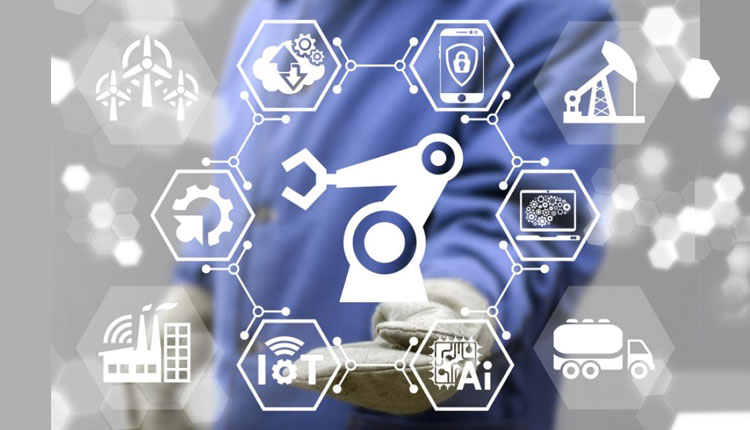It is quite likely that you have seen mobile phone commercials touting the wonders of 5G and how these networks are now available across the United States. Though to a great extent, this is true – if you have a 5G device and if you’re situated in hot spots in select cities across the country, still it is incomplete. In as far as a cellular service is concerned for consumers, 5G remains a work in progress but as a driving technology for manufacturing, the introduction of private (as well as public) networks in the years to come is definitely going to be a game-changer.
Connectivity is the name of the game. Despite 5G being a key part of connectivity for consumers and businesses, manufacturers should focus their efforts on smart connectivity, whether through 5G, Wi-Fi 6, 4G LTE, wired ethernet, or another channel. (At least, 60 per cent of manufacturing executives surveyed think a next generation of Wi-Fi solutions, including future iterations such as Wi-Fi 6, could be alternatives to deliver faster speeds and better performance in the next few years.) What matters most is generating actionable information from a web of connections — from people to systems to sensors to partners.
For some, 5G may end up as only the cellular network that their personal mobile phones run on. While for others, 5G will replace hardwired connections or Wi-Fi networks in factories. It can further be an opportunity to enable IoT, smart factories, and Industry 4.0 with thousands of sensors that monitor equipment, processes, and more, communicating through cutting-edge devices for analysis or connectivity with partners through cloud-based services.

While Artificial Intelligence (AI) has already found its way into our private lives, whether through smartphones, intelligent fitness trackers or smart assistants, the manufacturing industry has just started to seriously consider AI integration. The production line of the future, though, will rely heavily on AI for health monitoring and predictive maintenance services, visual inspection systems and optimisation of manufacturing processes.
In the future a factory will be built twice – first virtually, then physically. Moreover, digital representations of production machines continuously fed with live data from the field will be used for health monitoring throughout the entire lifetime of the equipment and will eventually make onsite missions be an exception.
With modularised machines being interconnected through standardised protocols like OPC UA TSN and fixed cable connections being replaced with wireless protocols like 5G, we will also see a transformation on the office floor. In the future, programs running on industrial controllers, edge devices and cloud systems will work more tightly with apps and dashboards and eventually lead to a fusion of the shop floor and the office floor.
The factory of the future will require for its flexible production the help of robots and autonomous handling systems to adapt faster to changing requirements. Although classic programming and teaching of robots are no longer suitable for preparing the system to handle the fast-growing number of different goods, future handling equipment will learn through reinforcement learning and other AI techniques.

In 2020, the global smart manufacturing market size was valued at USD 194.7 billion and is expected to experience a CAGR of 10.7 per cent from 2021 to 2027. With the advent of industry 4.0 revolution, there has been a significant transformation in the manufacturing sector in the form of digitisation and automation. An increasing demand for knowledge-based manufacturing and connected supply chains, which are equipped with advanced control, sensing, modelling, and simulation capabilities, are driving the growth of smart manufacturing. In the near future, industrial internet of things (IIoT), cloud technology, and industrial analytics will play a critical role in fostering market growth over the forecast period 2021-2027.
Global industry has been riddled by numerous concerns including intense competition, uncertainties in the supply of raw materials and energy, and exponential operational costs. As a result, industry players are actively looking for ways to reduce costs and make enterprises agile, accelerated, efficient, and compliant with consumer product quality. In the years to come, smart industrial solutions with technological development and enhancements in automation, connectivity, and security will boost the productivity and efficiency. According to a GSMA intelligence report, the industrial IoT connections will reach around 13.8 billion by 2025 and outpace number of IoT connections in consumer sector. The rise in number of IoT connections will foster the connectivity and digitisation among enterprises. Moreover, various aspects of smart manufacturing will offer additional benefits such as real-time optimisation and dynamic production, in turn boosting the demand for smart manufacturing at a rapid rate.
While 2020 has shown us how important digitalisation is for the manufacturing industry, the coming years will reveal who is ready for the factory of the future and who is not. Companies that will successfully embrace the challenges and opportunities of a more digital and virtual world will do so with teams of engineers with “domain+” skills i.e., those who are able to combine domain knowledge with (+) expertise in technology and tools from companies like MathWorks. Therefore, companies building and operating industrial equipment need to change their job postings and hire engineers with a completely different profile to be ready for a future in which Industry 4.0 is just the beginning.
Article by:
Arijit Nag is a freelance journalist who writes on various aspects of the economy and current affairs.
Articles of Arijit Nag

